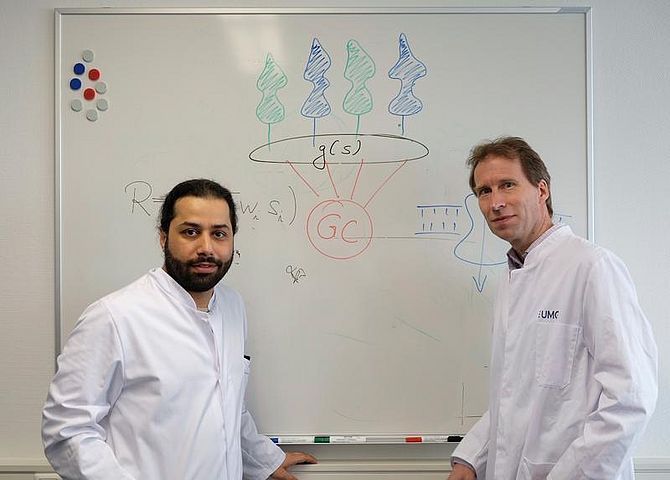The human sense of sight uses light to break down complex scenes into individual objects. On the one hand, the distinction between light and dark areas is important for recognising objects. But the distribution of colours also determines how easily different objects can be recognised and distinguished from one another. Recognising red fruit in the green foliage of a tree or blue blossoms in a meadow is possible even in shadows and with a different distribution of brightness. The origin of this colour perception lies in different light receptors in the eye, which react more easily to blue, green or red light. From the states of excitation of these light receptors, downstream nerve cells in the eye and brain can then calculate the colour components of a perceived image.
Many animals also have different light receptors in their eyes and thus, in principle, have the ability to distinguish colours. However, it is often not clear to what extent they actually make use of this. Scientists at the Department of Ophthalmology at the University Medical Center Göttingen (UMG) have now discovered special cells in the eyes of mice. Dr Mohammad Khani and Prof. Dr Tim Gollisch found that these cells combine the colour information from different light receptors in an unusual way. The cells could thus make special colour information accessible to the animals. The research was supported by European research funding from the European Research Council and by the Göttingen Collaborative Research Centre 889 "Cellular Mechanisms of Sensory Processing". The results have now been published in the renowned scientific journal "Nature Communications".
Original publication: Khani MH, Gollisch T (2021). Linear and nonlinear chromatic integration in the mouse retina. Nature Communications 12(1):1900. doi: 10.1038/s41467-021-22042-1.
Mice have different light receptors that are either particularly sensitive to green light or to ultraviolet (UV) light, which is not visible to the human eye. The investigated nerve cells in the eyes of mice combine the signals of both types of light receptors in such a way that certain colour transitions specifically activate these cells. "These colour detectors respond particularly well to transitions between the ultraviolet radiation of the sky and the green of vegetation," says Prof. Dr. Tim Gollisch, senior author of the publication. "In this way, they could provide the animals with a signal for spatial orientation."





